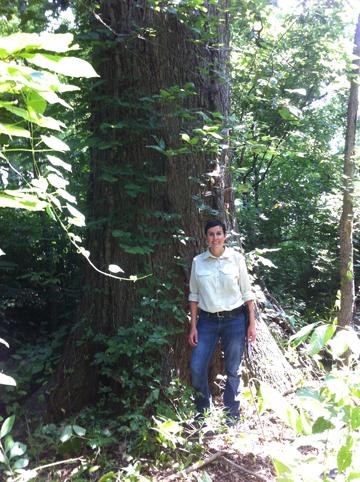
Xplor reconnects kids to nature and helps them find adventure in their own backyard. Free to residents of Missouri.


































Stay in Touch with MDC news, newsletters, events, and manage your subscription

Xplor reconnects kids to nature and helps them find adventure in their own backyard. Free to residents of Missouri.

A monthly publication about conservation in Missouri. Started in 1938, the printed magazine is free to residents of Missouri.


The Missouri Department of Conservation (MDC) traditionally crowns champion-sized trees throughout the state. Staying true to its name, Big Oak Tree State Park, near East Prairie, was just recognized as home to Missouri’s new champion Swamp Chestnut Oak tree, now certified as the largest known tree of its species in Missouri by the MDC’s Forestry Division.
Missouri State Parks nominated the tree for certification after measuring it with assistance from MDC Forester Ross Glenn and MDC Resource Assistant Kara McSpadden. The tree has a circumference of 204 inches, a height of 118 feet and a crown spread of 69 ¼ feet.
The points represent a formula used by the American Forests and MDC to assess a value for big trees. Points are determined by a tree’s height, crown spread and trunk size. The formula adds the circumference in inches (measured from 4.5 feet above ground) to the height in feet to one-fourth of the average crown spread.
To be eligible for listing as a champion tree, a tree must be native to Missouri or naturalized (but not invasive). Many naturalized species become invasive, choking out our native trees, and therefore are excluded from the list. Horticultural varieties, hybrids, and exotic species are also excluded from the list.
Swamp Chestnut Oak trees occur in moist soils of bottomland forests in large valleys and depressions, bordering slow-moving streams, sloughs and swamps. In Missouri, they’re found primarily in the southeastern lowlands of the Bootheel. This tree would have been very useful to Native Americans and early settlers. Known also as a “basket oak,” the wood splits easily into long strips that are good for making baskets. The acorn is one of the sweetest of all the oaks and can be eaten raw. Also popular with wildlife and cattle, the tree’s acorns fall to the forest floor and contribute to hard mast. Hard mast is important as a fall and winter food for many game species, including turkey and deer. Years with less hard mast result in lower wildlife populations, according to MDC.
“Crowning these champion trees helps us to keep record of the overall health of these tree species, but it also helps in recognition and education of the importance of these trees to the public,” Glenn said. “It’s a significant thing to be able to go out and observe a true champion tree like this one, and to share that experience with others.”
Glenn said MDC encourages everyone to join in the search for Missouri’s Champion trees.
“You never know when you’ll find a true giant out there,” Glenn said.
For more information on Champion trees in Missouri, go online to mdc.mo.gov. For more information about Big Oak Tree State Park and other Missouri state parks and historic sites, go online to mostateparks.com. Missouri State Parks is a division of the Missouri Department of Natural Resources.